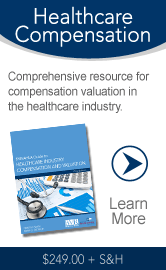 |
Issue #8-2 | January 24, 2013

Consolidations let hospitals flex pricing muscles—for nowHospitals that have acquired physician practices, ambulatory surgery centers, and diagnostic imaging centers discover they have significant pricing power to boost the bottom line, reveals a new report from Alvarez & Marsal, a consulting firm. However, this situation may be short-lived as payers catch on. Out is in: Healthcare providers that merge into single entities tend to shift the mix of services from inpatient to outpatient. This is because hospitals that acquire physician practices or other facilities convert them to hospital outpatient departments. Hospitals get higher reimbursements for most services in their outpatient departments than a free-standing physician clinic would get for the same service on an inpatient basis. Under the current system, Medicare pays more for the same services because hospitals that have doctors working for them can cite higher costs, so they can charge more. For example, according to the report, evaluation and management (E&M) office visits (CPT 99213) are reimbursed 80% higher by Medicare if they are performed in a hospital outpatient department than they would be if they were performed in a free-standing physician clinic. Medicare payment rates for surgical services are 74% higher in hospital outpatient departments than they are in an inpatient setting. The report also points out that large hospital systems also obtain higher reimbursement rates (relative to Medicare) for physician services from commercial insurers. Also, reimbursement by commercial payers is higher for outpatient visits and procedures than for inpatient stays. It won’t last: We agree with the report’s conclusion that hospitals have a “window of opportunity” to strategically realign their operations. That is, the jig will soon be up. In its most recent report, the Medicare Payment Advisory Commission (MedPAC) suggests that Medicare should pay a similar rate for the same services irrespective of service location. Commercial insurers will pick up on this and follow Medicare’s lead. “Higher operating profits to major hospital systems will only beckon the need for capitation and the transfer of financial risk to providers,” says the report. “The time for implementation of fundamental (strategic) change in care delivery is now.” OIG OKs hospital’s bonus plan for physician group Physician compensation is a key issue for 2013 as hospitals seek the right formula to transition from a fee-for-service to pay-for-performance setup to encourage better patient population health management. However, care must be taken that these incentive plans do not run afoul of fraud and abuse rules. Now, for the first time, we have a glimpse into how such a plan can pass muster. New ruling: A hospital designed a plan to pay a cardiology group a performance bonus for achieving certain patient service, quality, and cost savings measures. The Office of Inspector General says in OIG Advisory Opinion 12-22 that the plan is on safe ground with respect to the Civil Monetary Penalty (CMP) law and the federal anti-kickback statute. CMP rules prohibit reductions or limitations of services provided to Medicare and Medicaid beneficiaries. The federal anti-kickback statute bans payments designed to induce referrals for services reimbursed by federal healthcare programs. The hospital in the new ruling is a large, rural acute-care hospital in an area that is short on healthcare providers. It operates a cardiac catheterization lab in its main facility under a three-year co-management agreement with a physician group. The physician group runs the labs in exchange for: (1) a fixed amount; and (2) an annual performance-based payment that depends on employee satisfaction, patient satisfaction, improved quality of care, and the implementation of certain cost-cutting measures. Each component is evaluated based on specifically designed metrics. Seven key features: In analyzing whether this arrangement is in compliance with the CMP law and the anti-kickback statute, the OIG pointed to seven reasons why there will be no trouble:
The OIG has a complex view of pay-for-performance arrangements, which are becoming increasingly popular. This ruling establishes general guidelines for healthcare providers to consider when setting up such a deal. However, be aware that an advisory opinion is issued by the OIG at the request of an entity to get the agency’s opinion about the application of its fraud and abuse authorities to an existing or proposed business arrangement. It is legally binding on the Department of Health & Human Services and the requesting party. Although it can’t be used as precedent by anyone else, it is valuable as a reflection of the agency’s current attitude toward a particular matter. EHRs could be inflating hospital revenues Back in 2005, the influential RAND Corp. issued a report predicting that the U.S. healthcare system could save more than $80 billion annually if hospitals and doctors installed electronic health record (EHR) systems. Now, in a new report, RAND says the amount of annual savings was overstated. In fact, costs have gone up—and the systems themselves could be aggravating the situation.Higher billing? Interestingly, the report points out that there is increasing concern that EHR systems have actually contributed to the increase in healthcare costs because they make it easier to bill more for some services. EHR systems can trigger higher billing codes because they make it easier for doctors to document the level of treatment and substantiate the higher codes. The original RAND report was an eye-opener and helped induce Washington to dole out billions of dollars in federal stimulus money to help healthcare providers pay for these “money-saving” systems. But since the report was issued, annual healthcare expenditures in the U.S. have instead grown by $800 billion. RAND says the savings have not materialized mainly because the commercial systems that have been put in place are hard to use and don’t have enough “interoperability.” That is, doctors and patients can’t share medical information between different systems.Solution: RAND researchers say that EHR systems can fulfill the original promise of cost savings if the systems are redesigned and made more standardized so that they are easier to use, are truly interoperable, and give patients more access to and control over their health data. They also urge hospitals and doctors to “do their part by reengineering care processes to take full advantage of efficiencies offered by health IT, in the context of redesigned payment models that favor value over volume.” AHA shows how to develop a bundled payments program Healthcare reform is moving providers from fee-for-service payments to bundled payments, where a fixed-amount reimbursement is made for a patient’s entire “episode of care.” Bundled payments are designed to reduce U.S. healthcare costs by rewarding providers for improving the coordination, quality, and efficiency of care. Testing of this concept is going on now, and there is growing interest from payers and providers alike. The Center for Medicare & Medicaid Innovation of the Centers for Medicare & Medicaid Services (CMS) has just begun its Bundled Payments for Care Improvement Initiative, which is testing different models (see the November 29 issue of the Healthcare Value Wire). Design tips: In a new Issue Brief, the American Hospital Association gives some pointers to healthcare providers to help with their transition to bundled payments.
Watch out: We want to point out that analyzing and pricing patient care in terms of episodes is not easy. Make sure you have enough data from a large enough sample size to calculate the best rates. If you set the price too high, providers in the episode may perform unnecessary services. If the price is too low, providers may skimp and lower the quality of care. Setting the right bundled prices will be a delicate balancing act. |
|
||||||
1000 SW Broadway, Suite 1200, Portland, OR 97205
(503) 291-7963 | editor@bvhealthcarenews.com
www.BVResources.com/healthcare

